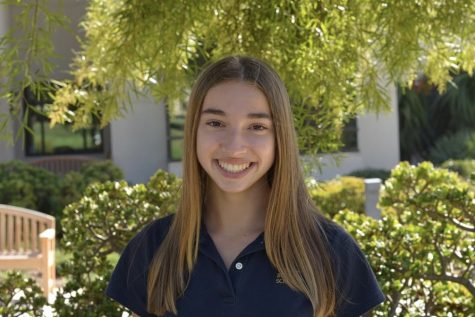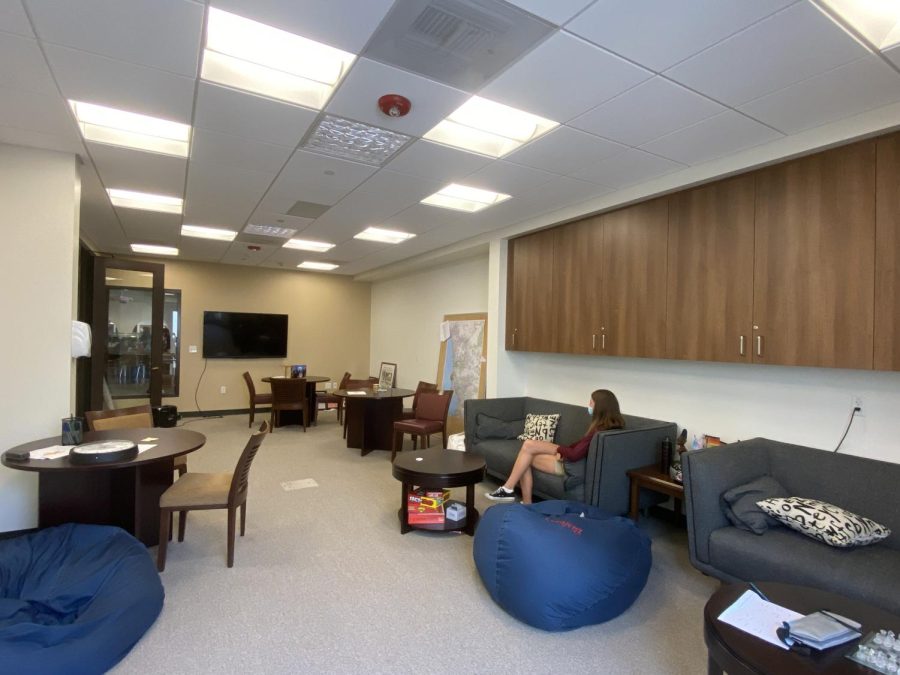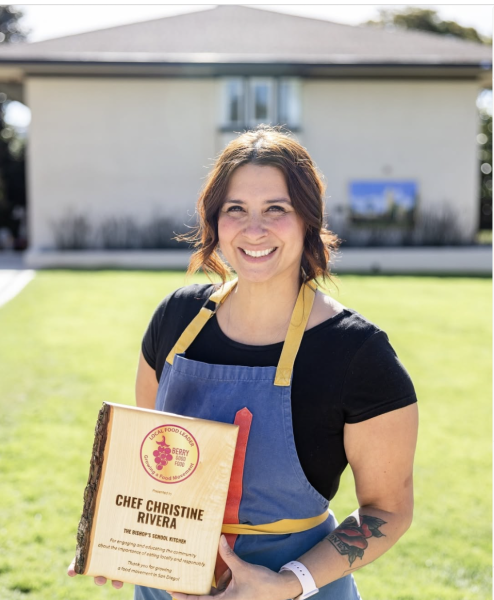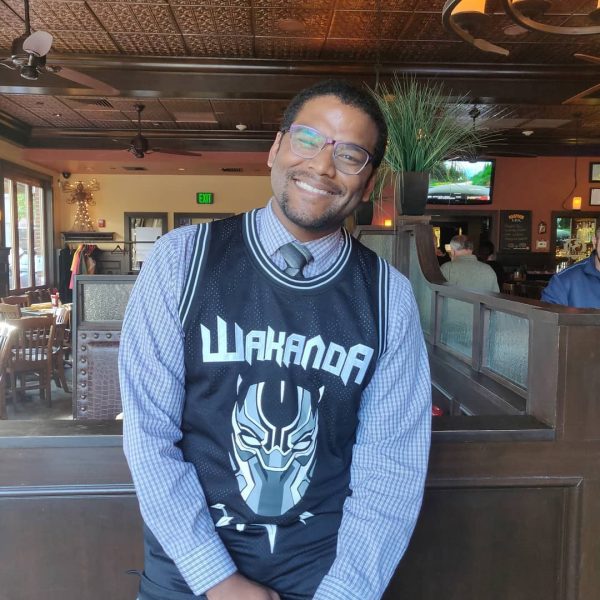DEI…and J
How the plan for DEIJ this year will work to resolve last year’s problems
The ASBC room is now the DEIJ room, where many affinity groups such as LASO meet.
It is no secret that DEIJ (Diversity, Equity, Inclusion, Justice), or “JEDI” as some advisors like to call it now, received some negative feedback last year. This year, the program is going through some changes, the most obvious being the addition of Justice to its title. Hopefully, these new changes will resolve some of the challenges that students and advisors experienced.
The original intent of DEI was to increase attention to racial justice in the midst of the pandemic and the Black Lives Matter movement by creating a space to talk about issues that affect the community outside of chapel talks. According to the Bishop’s website’s section on DEIJ, “In the upper school, we hope students navigate difficult conversations and engage in thoughtful discussion about the world they will inherit.”
To help align this with the mission of the school, the DEIJ team decided to add a J, for justice. Director of Diversity, Equity, Inclusion, and Justice, Mr. David Thompson noted that, “Two of our school’s core values are inclusion and justice. Adding the ‘J’ aligns this work with the purpose of our school; there’s no question, no doubt that we’re gonna do this work, and there’s no question, no doubt that this work is a part of our identity as a school. We want to do so in a way that is fair, in a way that is thoughtful, so the J roots diversity and equity in our founding as an institution.”
Last year, many students complained to advisors and each other about spending time on lectures outside of class, or talking about important conversations while not actually having those conversations. From the students’ perspective, the idea of the program was great, but some found fault with the implementation. “There is value in the concept of DEIJ, but the execution needs to be better,” Raphael Delgado (‘24) said.
One major issue that arose in the attempt to have these conversations was student participation. A central cause of students not contributing to discussions, along with lack of interest, was fear or discomfort. “These were very deep discussions to have when you are not comfortable with either your advisor or the group as a whole,” observed Ms. Rikke Sommer, World Languages teacher and advisor. “Students often felt that they knew what we wanted them to say, and they were not comfortable saying something that wasn’t in line with the accepted, politically correct answer.”
Mr. Thompson summed up the challenges of running DEIJ: “It’s really hard to please everyone.” Not all students are uncomfortable sharing their voices, such as Raphael, who describes himself as “an abnormally political person, I am not afraid to voice my opinions.” He recognized, however, that “a lot of people didn’t enjoy engaging in them, or didn’t engage in them at all.” Adding to this, Lilian Franqui (‘25) says about her experience so far that “A lot of people don’t like to expand, so we’ll get one-word answers, like ‘good’.”
Mr. Thompson described that different people within the Bishop’s community have very different levels of understanding, knowledge, and participation in subjects surrounding DEIJ. There are people who discuss these issues regularly, and there are people who are learning that these issues exist for the first time. “We have people in our community who think this program moves too fast, and people who think that we should move slower. The biggest challenge is trying to figure out how in the course of 25 minutes we create opportunities that hope to meet students on both ends of that spectrum. The hope is that we do this work thoughtfully, and we meet students where they are.” he explained.
It has been recognized by the DEIJ team that students are going to have different levels of comfort with DEIJ conversations, but as of right now there appears to be more of an effort to reform the structure of the lessons rather than addressing the lack of trust and discomfort. However, changing the structure could help the issue by allowing more flexibility with lesson plans, which is one of the changes implemented this year.
Some advisors found an easy fix for student participation: change the topic to something the students are interested in. When students care about a certain issue or event and are expressing more opinions on that than the planned lesson, sometimes advisors would let that conversation play out instead of forcing the planned one. For example, Science teacher and advisor Ms. Rachel Ching remembered that “We did have a specific case where the shootings in Atlanta happened so we changed the topic in response to what was actually happening in real time around us.”
Addressing the question of flexibility, Mr. Thompson explained that this year topics and questions will be more open ended. The point will be more on the conversation than the actual question or topic—geared towards student participation and voices rather than sticking to set lesson plans.
With this new lens, it seems that the DEIJ experience is now heavily dependent on the advisors. Each advisor will have a different level of flexibility, a different ability to make sure everyone is participating, and find that spark that turns the conversation into a fruitful one. Advisors this year will face the challenge of finding a balance for students on both ends of the experience spectrum. “The hope is that we do this work thoughtfully, and meet students where they are.” explained Mr. Thompson.
Another major change to DEIJ is the involvement of students in the planning process. You might remember receiving an email about applying for DEIJ student programming, one of the opportunities being to “help design and lead some DEIJ advisory activities.” This student group has now been formed and will give their input and lead lessons for adult advisors.
These students recently received an email from Mr. Thompson and mathematics teacher and member of the DEIJ team Ms. Seymour about the structure and changes to DEIJ. According to the email, every four lessons will be grouped as a sequence: an introduction to the topic, content, depth and understanding, and developing ideas on how to take action. In total, these lessons will add up to four or five hours over the school year, in sixteen 25 minute sessions.
One student who is involved in DEIJ planning, Lilian Franqui (‘25), when asked if she thinks that 25 minutes is sufficient, laughed, “Definitely not. The first ten minutes are the teachers trying to just get their content out, and there’s 10 minutes of discussion, and five minutes of lecture but it’s really not enough time to talk about real-world issues.”
These lessons hope to include the themes and values of the school, specifically this year’s. The email declared that “this year’s theme throughout the school is compassion. Everything we do will attempt to connect a topic or discussion to that theme.”
To address the spectrum of students’ levels of experiences that Mr. Thompson described, the email states that “We want to build a structure that engages grades 6-12 through skills and content, so that the entire school can address similar topics at the same time, but in ways that get deeper and more challenging as students get older. We do not want students to feel like they’re repeating lessons, beyond the introductory conversations each year that reinforce guidelines for discussion to all who are new and returning, alike.”
Finally, to connect back to the purpose of DEIJ, the email defines that “The purpose of the DEIJ Advisory is in part to share information about topics, terms, and social justice issues, however, the real crux of the program is for you and your peers to practice difficult conversations so in your lives outside of DEIJ you can become more informed and engaged.” Many advisors found that some conversations last year were not very successful in any way, such as Ms. Sommer, who shared, “While these were very important topics, I don’t think they generated an equally as important and fruitful discussion.” This year, the goal of simply having these conversations has been clarified and refocused towards.
The creation of DEIJ was a whirlwind last year, taking off quickly without enough time to carefully prepare and thoroughly plan out the structure and plan of the program. Ms. Ching, empathizing with the creators of DEIJ, appreciates that “This is only the second year in its current form and it’s a challenging thing to put together.” So far, we have yet to experience any major changes to DEIJ, but as the addition of the J shows, they will be coming.

If you want to have a conversation with Lily, all you have to do is mention the words ‘field hockey’, and she will talk for hours. She is basically...






